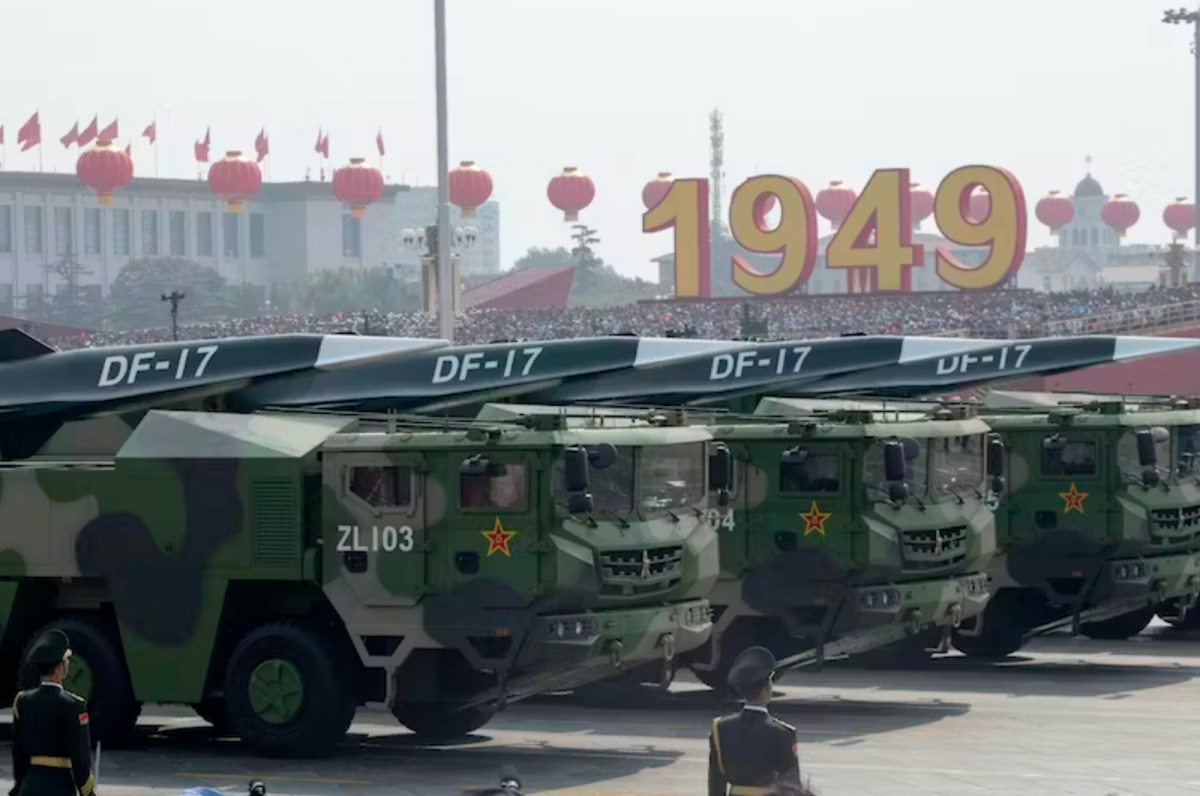Global Courant 2023-05-26 15:07:47
China’s newest hypersonic missile, the DF-27can fly as far as Hawaii, penetrate US missile defenses and a particular threat to US aircraft carriersaccording to news reports from a assessment of the Pentagon.
Chinese researchers claimed in a May 2023 investigative journal that the country’s hypersonic missiles could destroy a US aircraft carrier group “with certainty.” This possibility threatens to sideline US aircraft carrier groups in the Pacific, potentially shifting the strategic balance of power and giving the US limited options to help Taiwan in case China invades.
This shift in the balance of power shows how the next-generation hypersonic missiles that China, Russia and the US are developing pose a major threat to global security.
I’m a aerospace engineer who studies space and defense systems, including hypersonic systems. These new systems pose a significant challenge due to their maneuverability throughout their entire trajectory. Since their flight paths can change as they travel, you’ll need to track them in flight to defend against these missiles.
A second major challenge arises from the fact that they operate in a different part of the atmosphere than other existing threats. The new hypersonic weapons fly much higher than slower subsonic missiles, but much lower than intercontinental ballistic missiles. The US and its allies do not have good tracking coverage for this intermediate region, nor does Russia or China.
Russia has claimed that some of its hypersonic weapons can carry a nuclear warhead. This statement alone is cause for concern, whether true or not. If Russia ever used this system against an enemy, that country would have to decide whether the weapon is conventional or nuclear.
How hypersonic missiles threaten to disrupt the relative stability of the current era of nuclear weapons.
In the case of the US, if the weapon is determined to be nuclear, there is a very good chance that the US will regard this as a first strike and respond by unloading its nuclear weapons on Russia. The hypersonic speed of these weapons exacerbates the precarious situation, as the time for a last-minute diplomatic solution is severely shortened.
It is the destabilizing influence that modern hypersonic missiles represent that poses perhaps the greatest risk. I believe the US and its allies need to quickly deploy their own hypersonic weapons to bring other countries like Russia and China to the negotiating table to develop a diplomatic approach to managing these weapons.
What is Hypersonic?
Describing a vehicle as hypersonic means it flies much faster than the speed of sound, which is 761 miles per hour (1,225 kilometers per hour) at sea level and 663 mph (1,067 km/h) at 35,000 feet (10,668 meters) where passenger jets fly. Passenger jets fly at just under 600 mph (966 km/h), while hypersonic systems operate at speeds of 3,500 mph (5,633 km/h) — about 1 mile (1.6 kilometers) per second — and above.
Hypersonic systems have been in use for decades. When John Glenn returned to Earth in 1962 from the first US-manned flight around the Earth, its capsule entered the atmosphere at hypersonic speed. All intercontinental ballistic missiles in the world’s nuclear arsenals are hypersonic, reaching about 15,000 mph (24,140 km/h), or about 4 miles (6.4 km) per second at their maximum speed.
Intercontinental ballistic missiles are launched on large rockets and then fly on a predictable trajectory that takes them out of the atmosphere into space and then back into the atmosphere. The new generation of hypersonic missiles fly very fast, but not as fast as ICBMs. They are launched on smaller rockets that keep them within the upper reaches of the atmosphere.
Hypersonic missiles are not as fast as intercontinental ballistic missiles, but can vary their trajectories. United States Government Accounting Office
Three types of hypersonic missiles
There are three different types of non-ICBM hypersonic weapons: aero-ballistics, glide vehicles, and cruise missiles. A hypersonic aero-ballistic system is dropped from an aircraft, accelerated to hypersonic speed using a rocket, and then follows a ballistic, i.e. unpowered, trajectory. The system that Russian troops use to attack Ukraine, the Kinzhal, is an aero-ballistic missile. The technology has been around since about 1980.
China and the US are investing heavily in the development of hypersonic missiles. Video: The conversation via YouTube
A hypersonic glider is launched to a great height on a rocket and then glides maneuvering towards its target. Examples of hypersonic glide vehicles are those of China Dongfeng-17that of Russia Avangard and that of the United States Navy Conventional prompt attack system. American officials expressed concern that China’s hypersonic glider technology is more advanced than the US system.
A hypersonic cruise missile is boosted to hypersonic speed by a rocket and then uses an air-breathing engine that produces a scramjet to maintain that speed. Because they take air into their engines, hypersonic cruise missiles require smaller launchers than hypersonic gliders, meaning they cost less and can be launched from more places.
Hypersonic cruise missiles are under development by China and the US. The US reportedly made a test flight from a scramjet hypersonic missile in March 2020.
Defensive measures
The main reason countries are developing these next generation hypersonic weapons is how difficult they are to defend due to their speed, maneuverability and flight path. The US is beginning to develop a layered approach to defense against hypersonic weapons, including a constellation of space-based sensors and close cooperation with key allies
With all this activity on hypersonic weapons and defenses against them, it is important to assess the threat they pose to national security. Hypersonic missiles with conventional, non-nuclear warheads are especially useful against high-value targets, such as an aircraft carrier. Being able to take out such a target can have a significant impact on the outcome of a major conflict.
However, hypersonic missiles are expensive and therefore unlikely to be produced in large quantities. As seen in Russia’s recent use, hypersonic weapons are not necessarily a silver bullet that ends a conflict.
Ian Boyd, director, Center for National Security Initiatives; Professor of Aerospace Engineering, University of Colorado Boulder.
This article has been republished from The conversation under a Creative Commons license. Read the original article.
Similar:
Loading…








